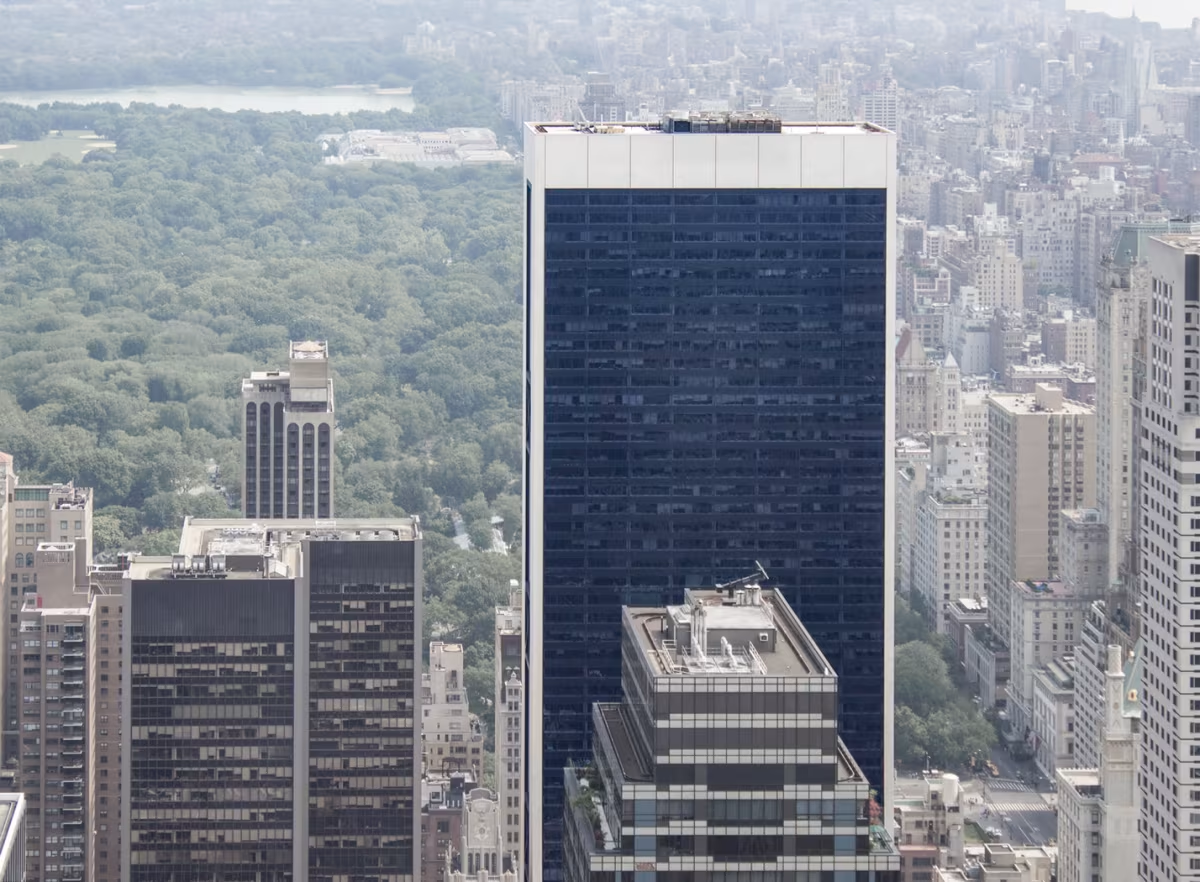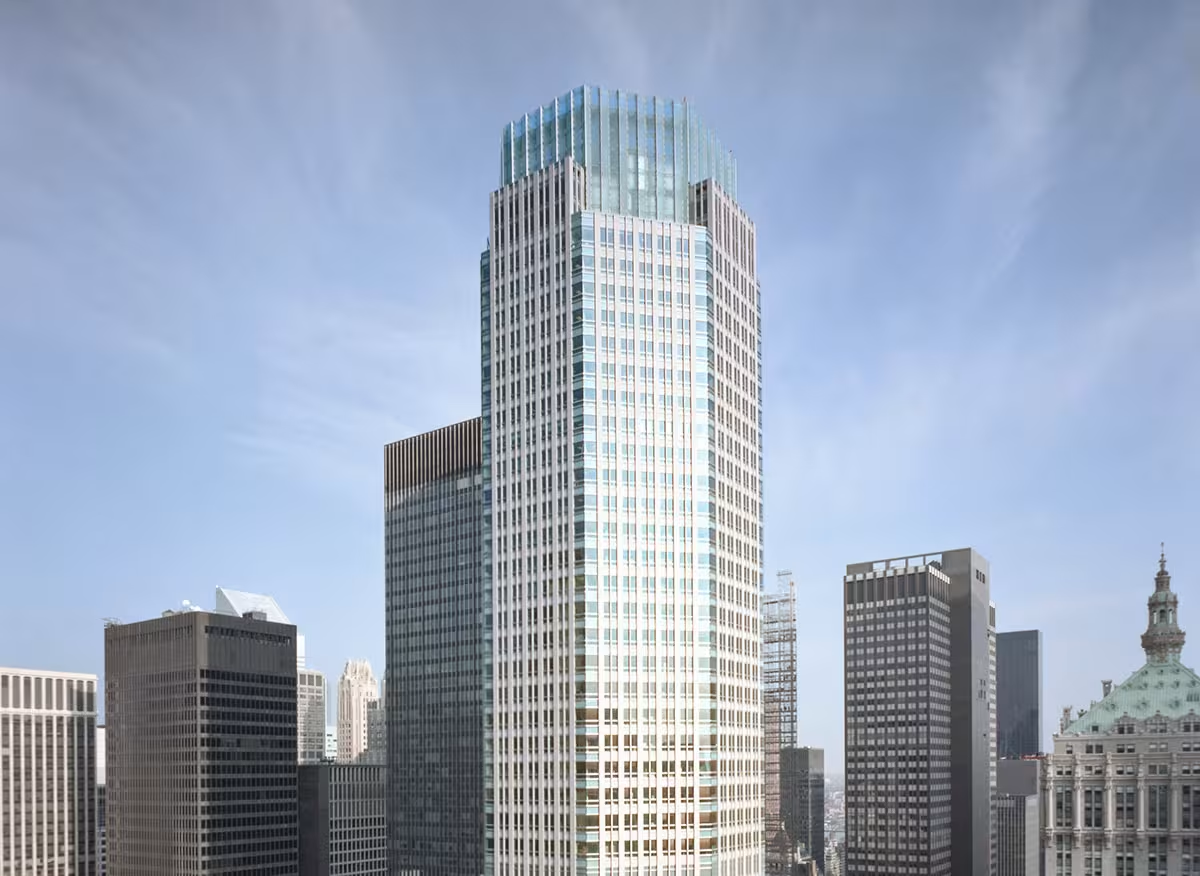Solow Building vs 383 Madison Avenue Building


Comparing the Solow Building and the 383 Madison Avenue Building is particularly interesting because they share the same skyline in New York, NY, and were both designed by Skidmore, Owings & Merrill. However, they were completed more than 27 years apart.
This offers a unique perspective on how the architect's style and the city's architecture evolved over time.
Height & Size
These two towers present an interesting contrast in their proportions. The 383 Madison Avenue Building rises higher at 755ft (230m), while the Solow Building reaches 673ft (205m). However, the Solow Building accommodates more floors with 49 levels above ground, compared to 47 floors in the 383 Madison Avenue Building.
This suggests different approaches to interior space design. The 383 Madison Avenue Building has an average floor-to-floor height of approximately 4.9m, while the Solow Building has more compact floors averaging around 4.2m each. The taller building's more generous floor heights might indicate grander interior spaces, higher ceilings, or different programmatic requirements.
These different proportions likely reflect the specific needs each building was designed to serve, whether driven by zoning regulations, client requirements, or the intended use of the spaces within. The contrast shows how architects can achieve different spatial experiences even when working with similar overall building scales.
Architectural Style
The Solow Building was designed in the Modern style, while the 383 Madison Avenue Building reflects the principles of Contemporary.
The Solow Building represents a late expression of the Modern, a style already in decline in 1974 when it was completed. By contrast, the 383 Madison Avenue Building followed the then mainstream Contemporary, embodying the dominant architectural direction of its time.
With 27 years between them, the comparison also reflects how quickly architectural priorities can shift from one dominant language to another.
Uses
Both the Solow Building and the 383 Madison Avenue Building were designed to serve as commercial towers, and that has remained their main use since their completion, serving similar roles in the urban fabric.
Structure & Facade
The two buildings opted for different structural and facade solutions.
The Solow Building uses a Trussed Frame system, which uses diagonal bracing in addition to beams and columns for stability, while the 383 Madison Avenue Building uses a Frame system, that relies on a regular grid of columns and beams to sustain its weight.
And when it came to the facade, the Curtain Wall went with a Curtain Wall facade, which uses a lightweight glass curtain wall hung from the structure, while the 383 Madison Avenue Building opted for a Modular facade, that employs prefabricated panels, often mixing solid surfaces with smaller windows.
| Solow Building | 383 Madison Avenue Building | |
|---|---|---|
| Skidmore, Owings & Merrill | Architect | Skidmore, Owings & Merrill |
| 1968 | Construction Started | 1999 |
| 1974 | Year Completed | 2001 |
| Modern | Architectural Style | Contemporary |
| Commercial | Current Use | Commercial |
| 49 | Floors Above Ground | 47 |
| 205 m | Height (m) | 230 m |
| 143411 | Built-up Area (m²) | 110000 |
| 34 | Number of Elevators | 30 |
| Trussed Frame | Structure Type | Frame |
| Steel | Vertical Structure Material | Steel |
| Concrete And Steel | Horizontal Structure Material | Poured Concrete Over Metal Decking |
| No | Facade Structural? | No |
| Glass, Marble, Aluminium | Main Facade Material | Granite, Glass |
| Solow Construction Co. | Main Contractor | Turner Construction Company |
| Solow Development Corporation | Developer | Gerald D Hines Interests |
| Cosentini Associates | MEP Engineer | Jaros Baum & Bolles |
| Weidlinger Associates | Structural Engineer | WSP Cantor Seinuk |
| NY | State | NY |
| New York | City | New York |
| 9 West 57th Street | Address | 383 Madison Avenue |